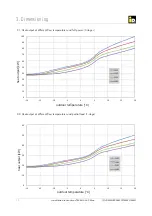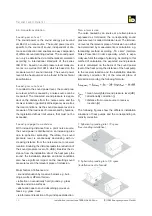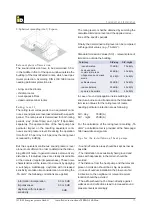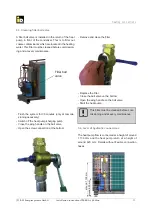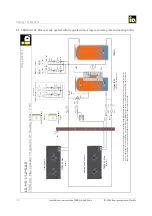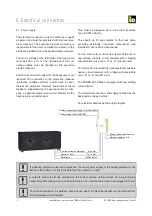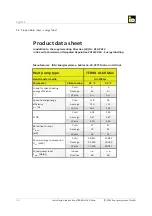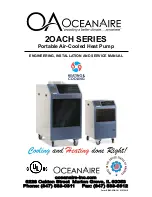
(C) IDM Energiesysteme GmbH
5. General description
Installation instructions TERRA AL 60 Max
23
The hydraulic executions must be
expertly insulated (heat loss and noise
reduction)
The inspection and the preparation of the
heating water, belongs to the responsi-
bility of the competent heating engineer.
5.
5.
5. Interior installation
General description
General description
5. Heating connections
5.1. Requirements heating connections
Incorrect
fl
ow volumes due to incorrect
pipework, false
fi
xtures or improper
pump operation can cause damage!
The pertinent laws, regulations and standards for
boiler house pipework and also for heat pump sys-
tems must be observed.
- Before the heatpump in the heating return a mag-
netic dirt trap must be installed.
- The to the heatpump included
fl
ow switch must be
installed in the return of the heat pump in a horizon-
tal position.
- The safety and expansion devices for closed
heating systems pursuant to EN 12828 must be
provided.
- If an electric heating element is used in the heating
bu
ff
er, an additional safety device must be installed
on the bu
ff
er.
- The line dimensioning must comply with the re-
quired
fl
ow volumes.
- The connection hoses for heat pump inlet, return
fl
ow and warm water inlet must be installed. The
connection hoses can be shortened to the desired
length, however, not shorter than 60 cm. Further-
more the connection hoses must not be bent!
- At the highest points of the connection lines venting
options must be provided, and at the lowest points
outlet options.
- In order to avoid energy losses the connection lines
must be insulated with suitable material.
Oxygen di
ff
usion
In the case of non di
ff
usion-resistant under
fl
oor heat-
ing with plastic pipes or open heating systems, corro-
sion may occur in the steel parts if steel pipes, steel
radiators or storage heating systems are used. Corro-
sion products can deposit in the condenser and lead
to a capacity loss of the heat pump or high-pressure
disturbances. Therefore avoid open heating systems
or steel pipe installations in conjunction with non-
di
ff
usion-resistant plastic pipes in under
fl
oor heating.
Heating water quality
For
fi
lling heating systems, very clear guidelines ap-
ply relating to the heating water quality Speci
fi
cally,
European standard EN 12 828, ÖNORM H 5195
and in particular VDI Guideline no. 2035-1 must be
observed and represent the latest technological stan-
dards. For example, the hardness of the
fi
lling water
must be taken into account. This is because 1 °dH
means 17 mg of lime per litre that can be separated.
For a heating system with 1500 l of water content
(bu
ff
er reservoir), this represents 520 grammes of
lime at 20 °dH (in other words, half a kilogram). As
the lime deposits itself at the hottest and narrowest
parts in the system, this means that gas thermals,
heat exchanger for solar plants, etc. are the most af-
fected. The plate exchanger for the hot water heating
(especially with wood-
fi
red boilers and solar plants)
and the hot gas heat exchanger in the TERRA HGL
heat pump can also become calci
fi
ed with very hard
heating water in some circumstances. For this rea-
son, in systems with a water hardness of over 14°dH
or with a calcium hydrogen carbonate concentration
of more than 2.5 mol/m³the heating water should
be treated accordingly (softened/demineralised). In
addition, the oxygen input into the heating system
must be avoided. With non-di
ff
usion tight plastic pipe
under
fl
oor heating or open heating systems, corro-
sion can occur on the steel parts via oxygen di
ff
usion
when using steel pipes, steel radiators or reservoirs.
Corrosion products can be deposited in the heat
exchangers and cause output losses or faults.For
this reason, open heating systems or steel pipe in-
stallations in combination with plastic pipe under
fl
oor
heating which is not di
ff
usion-tight should be avoided.
The pH value of the heating water should also be
checked; this should be between 8,2 and 9.5.



